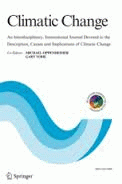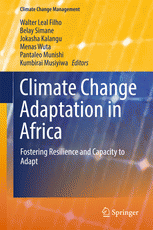Rapidly accelerating climate change in the Himalaya is projected to have major implications for montane species, ecosystems, and mountain farming and pastoral systems. A geospatial modeling approach based on a global environmental stratification is used to explore potential impacts of projected climate change on the spatial distribution of bioclimatic strata and ecoregions within the transboundary Kailash Sacred Landscape (KSL) of China, India and Nepal. Twenty-eight strata, comprising seven bioclimatic zones, were aggregated to develop an ecoregional classification of 12 ecoregions (generally defined by their potential dominant vegetation type), based upon vegetation and landcover characteristics. Projected climate change impacts were modeled by reconstructing the stratification based upon an ensemble of 19 Earth System Models (CIMP5) across four Representative Concentration Pathways (RCP) emission scenarios (i.e. 63 impact simulations), and identifying the change in spatial distribution of bioclimatic zones and ecoregions. Large and substantial shifts in bioclimatic conditions can be expected throughout the KSL area by the year 2050, within all bioclimatic zones and ecoregions. Over 76 % of the total area may shift to a different stratum, 55 % to a different bioclimatic zone, and 36.6 % to a different ecoregion. Potential impacts include upward shift in mean elevation of bioclimatic zones (357 m) and ecoregions (371 m), decreases in area of the highest elevation zones and ecoregions, large expansion of the lower tropical and sub-tropical zones and ecoregions, and the disappearance of several strata representing unique bioclimatic conditions within the KSL, with potentially high levels of biotic perturbance by 2050, and a high likelihood of major consequences for biodiversity, ecosystems, ecosystem services, conservation efforts and sustainable development policies in the region.
DOI:
https://doi.org/10.1007/s10584-014-1176-2
Altmetric score:
Dimensions Citation Count:

Publication year
2014
Authors
Zomer, R.J.; Trabucco, A.; Metzger, M.J.; Wang, M.; Oli, K.P.; Xu, J.C.
Language
English
Keywords
climate change, climatic zones, ecology, geography, ecosystem services, sustainable development
Geographic
India, China, Nepal























